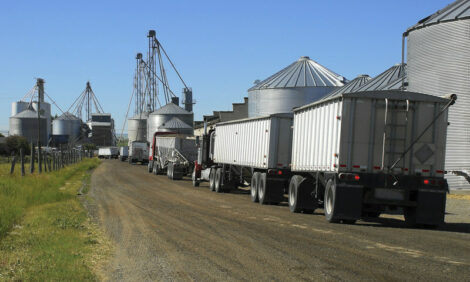



Final report for Denmarks CSF contingency plans
DENMARK - This article is a summary of the final report of a mission carried out to evaluate the disease contingency plans for epizootic diseases (in particular Classical Swine Fever and Foot and Mouth disease).
|
![]()
Executive Summary
The mission was undertaken as part of a series of missions in the Member States, which started in January 2003, in order to access the resources and arrangements put in place to implement EU requirements for contingency plans for the major epizootic (OIE list "A") diseases.
In general, the contingency planning arrangements in place would allow the competant authorities (CA) to respond appropriately to one or more outbreaks of epizootic disease. The further work on-going in this area should increase the effectiveness of any such report.
The relevant EU legislation has been transposed into Dutch legislation. Disease contingency plans were, in general, in compliance with requirements of EU legislation and guidelines. The Classical Swine Fever (CSF) has been updated since the adoption of Council Directive 2001/89/EC and has been submitted to the Commission Services for approval. The Foot and Mouth Disease (FMD) plan was up-dated in May 2003 following a project reviewing FMD contingency planning in 2001. A further update is planned following the adoption of the new FMD Directive.
The central competant authority (CCA), the Danish Veterinary and Food Administration, are responsible for elaborating national contingency plans and operations manuals. The regional competant authorities, the Regional Veterinary and Food Control Authorities, are responsible for the development of specific arrangements in their regions for setting up and operating local disease control centres. A new regional group for Epizootic Diseases, with responsibilities for contingency planning has been created and has started work on a number of new initiatives in relation to training and preparedness, including assisting the Regions with the development of their local arrangements.
Holding restriction, animal identification and movement controls for cattle, pigs, sheep and goats were satisfactory for epizootic disease control purposes.
Many of the required elements of the contingency plans are in place, e.g. holding restriction and movement control dadabase for cattle, pigs, sheep and goats, an expert group and valuation, compensation and carcass disposal procedures. Plans have been developed at regional level for the establishment of Local Disease Control Centres in the event of an outbreak. Possible sources of additional staff, facilities, equipment and materials have been identified, although arrangements for obtaining these resources were not always formalised. The national reference laboratory for
CSF and FMD has sufficient diagnostic capacity to respond to outbreaks, although it has not yet been accredited.
Denmark has a no-vaccination policy and at present there are no procedures for emergency vaccination, no vaccine reserves are held and there are no arrangements in place for supply of vaccine, other than from the EU antigen bank.
No real-time alert exercises have taken place to date, although an exercise is being planned. Although the level of disease awareness was found to be high, very few suspicions of epizootic disease were notified to the competant authorities.
Further Information
To view the full report, please click here (PDF Format).
Source: European Commission - 14th October 2003













